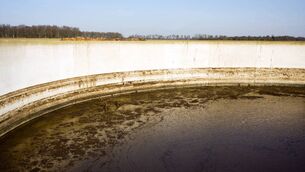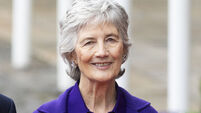12.5% drop in dairy heifer calf numbers this year

2027 is projected to have fewer replacement heifers for the national dairy herd.
Dairy female calf registrations have fallen by 12.5% compared to last year.
Numbers are down by more than 45,000 for dairy heifer calves compared to this time last year, reports the Irish Cattle Breeding Federation (ICBF). This reduction is expected to result in fewer replacement heifers available in 2027.
This drop follows on from a 4.4% reduction in dairy herd registrations between 2024 and 2023. ICBF reports that in 2023, between January 1 and May 15, 379,858 dairy heifer calves were registered. This year, only 317,780 dairy heifer calves were registered within the same period.
The total number of registered dairy calves has also dropped by 2%, a reduction of more than 28,000 head to the national dairy herd compared to this time last year. This is following the slight increase of 0.1% recorded between 2023 and 2024.
This report comes in the wake of the Irish Farmers’ Association warning from dairy chair Martin McElearney, who was deeply concerned regarding the stock statistics published by ICBF.
Discussing the current stock numbers, Mr McElearney said: "Should dairy replacement breeding trends remain the same for 2025, we are looking at a significant collapse of the dairy herds in two years’ time."
“The number of dairy replacements born this year will be nowhere near sufficient to sustain the Irish dairy herd at current levels, particularly when the number of dairy stock being lost to bovine TB is accounted for,” said Mr McElearney.
As of May 1, the number of first-time calved heifers has also dropped by 9.5%, about 29,000 fewer animals compared to 2024 figures. The predicted outcome of these declining numbers would suggest the market for dairy heifers is likely to be strong for the next few years because of the sharp decline in both female calves and first-calved heifers.
In 2024, there were 304,514 dairy first-calved heifers that had calved up to May 1, a small increase of 2.4% from 2023’s number of 297,474.
"We are now in the middle of peak breeding season. It is vital that farmers consider using more dairy AI —both sexed and conventional — this year to ensure that they are breeding enough replacements for their herds," Mr McElearney said, regarding the figures.
ICBF is strongly encouraging farmers to increase the number of dairy straws used on their herd this year in an effort to minimise the predicted shortage of dairy replacements in the national herd in 2027.
The federation explains only 78% of dairy females born calve down as two-year-old heifers, so for a 100-cow herd, a farmer must aim to calve down a minimum of 25 dairy females to achieve a 20% replacement rate.
It has told farmers to err on the side of caution and to allow for some choice when selecting females — it is advisable to target at least 30 dairy females. This would result in a minimum of 60 cows needing to be put in-calf to a dairy bull within a 100-cow herd.
In the same report, ICBF found there was a drop of 21.2% in dairy male calves registered in 2025, with the number reading 214,055 by May 15. This comes as a further decline from 2024’s numbers, which were a decline of 16% from 2023's registered male calves.
Registered dairy-beef calves have increased by 9.6% registered births, which brings the total to 851,347 for May 15, 2025. The trend follows on from 2024, which saw 776,665 registered births of dairy-beef calves in the same period, an increase of 9.9% from 2023 figures.











